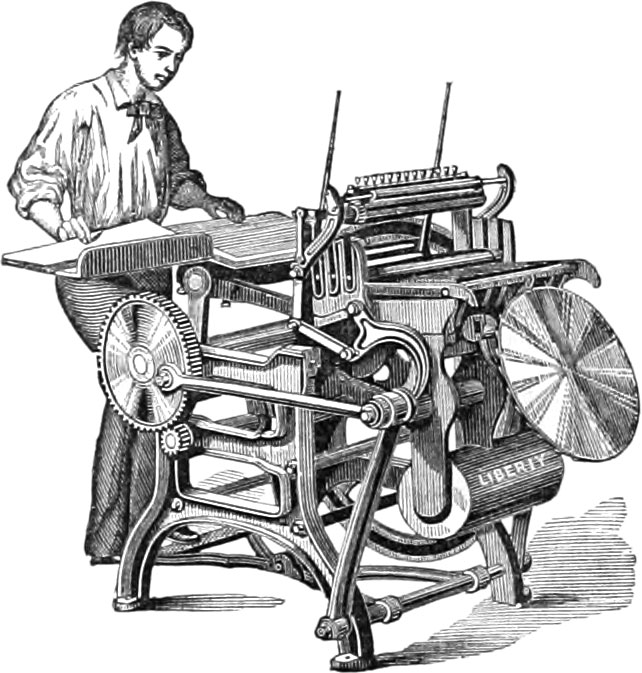Degener’s press
In the primitive days of typography, the time-honoured but unwieldy hand press was the only appliance demanded by the jobbing printer. But the necessity has sprung up within the last generation of a machine more compact in form and convenient in operation, and one providing, at the same time, for a very material increase of speed. The extension of advertising by means of cards and circulars, called for presses specially adapted for the rapid production of that class of work. Stimulated by this demand, various engineers have invented different jobbing machines, one of which is here illustrated.

It is the invention of an American, Frederick Otto Degener, who introduced it in 1860, under the name of “The Liberty.” In this press are ocmbined the important necessities of simplicity and strength, with the ability to print, at the utmost speed, the work of the finest quality, with freedom from all danger to the operator. The type is fastened, in a chase, on to the table, which is vertical, and the paper to be printed is placed beneath a platen, similarly inclined. On the two meeting, the impression is produced. The speed is, according to the ability of the operator, from 1000 to 2,500 impressions per hour.